Production
A high-production feature, The Kid From Spain was provided a million-dollar budget by producer Samuel Goldwyn and engaged some of the finest artistic and technical talent available in Hollywood during the early 1930s. Eddie Cantor was ranked among the top box office stars in the US in 1933: in overseas popularity he out-performed Greta Garbo and Marlene Dietrich. [10] [11] Choreographer was provided by Busby Berkeley, and cameraman Gregg Toland, who would film Citizen Kane (1941) was cinematographer.
Goldwyn, a notoriously “autocratic” producer, attempted to suppress any revisions to the story or script, treating director McCarey “brusquely” during filming. [12] Cantor, in his 1957 autobiography Take My Life, recalled how he and McCarey circumvented Goldwyn: “One afternoon we got to a scene that didn’t play funny.” Feigning illness, Cantor left the studio and absconded for the weekend to McCarey’s beach house in Santa Barbara. There he and the director overhauled the scene. Cantor continues: “Monday we shot one of the best scenes of the picture. Goldwyn, seeing the rushes, was amused and baffled. He couldn’t figure out where the scene had come from.” [13]

Trader Horn is a 1931 American Pre-Code adventure film directed by W.S. Van Dyke and starring Harry Carey and Edwina Booth. It is the first non-documentary film shot on location in Africa. The film is based on the book of the same name by trader and adventurer Alfred Aloysius Horn and tells of adventures on safari in Africa.
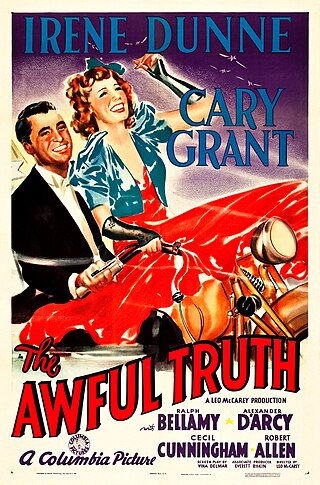
The Awful Truth is a 1937 American screwball comedy film directed by Leo McCarey, and starring Irene Dunne and Cary Grant. Based on the 1922 play The Awful Truth by Arthur Richman, the film recounts a distrustful rich couple who begin divorce proceedings, only to interfere with one another's romances.

Love Affair is a 1939 American romance film, co-starring Charles Boyer and Irene Dunne, and featuring Maria Ouspenskaya. It was directed by Leo McCarey and written by Delmer Daves and Donald Ogden Stewart, based on a story by McCarey and Mildred Cram. Controversial on concept, the official screenplay was re-tooled and rewritten to appease Hollywood censorship and relied on actor input and improvisation, causing long delays and budget extensions.
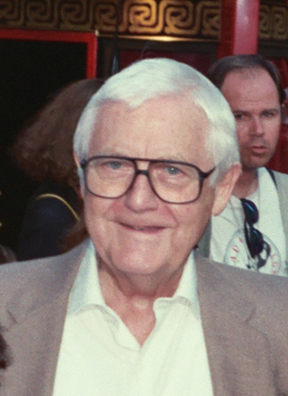
Robert Earl Wise was an American filmmaker. He won the Academy Awards for Best Director and Best Picture for his musical films West Side Story (1961) and The Sound of Music (1965). He was also nominated for Best Film Editing for Citizen Kane (1941) and directed and produced The Sand Pebbles (1966), which was nominated for Best Picture.
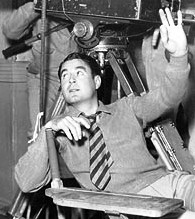
Thomas Leo McCarey was an American film director, screenwriter, and producer. He was involved in nearly 200 films, including the critically acclaimed Duck Soup, Make Way for Tomorrow, The Awful Truth, Going My Way, The Bells of St. Mary's, My Son John and An Affair To Remember.

Muriel Teresa Wright was an American actress. She was nominated twice for the Academy Award for Best Supporting Actress: in 1941 for her debut work in The Little Foxes, and in 1942 for Mrs. Miniver, winning for the latter. That same year, she received a nomination for the Academy Award for Best Actress for her performance in The Pride of the Yankees, opposite Gary Cooper. She is also known for her performances in Alfred Hitchcock's Shadow of a Doubt (1943) and William Wyler's The Best Years of Our Lives (1946).
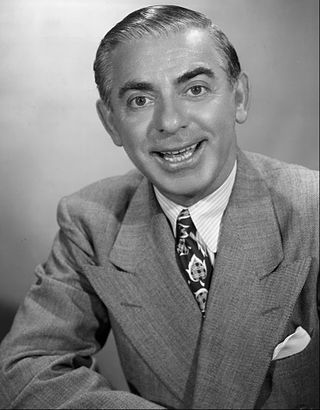
Eddie Cantor was an American comedian, actor, dancer, singer, songwriter, film producer, screenwriter and author. Cantor was one of the prominent entertainers of his era.

Robert G. Jordan was an American actor, most notable for being a member of the Dead End Kids, the East Side Kids, and The Bowery Boys.
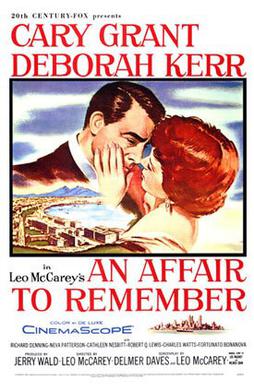
An Affair to Remember is a 1957 American romance film directed by Leo McCarey and starring Cary Grant and Deborah Kerr. Filmed in CinemaScope, it was distributed by 20th Century Fox. It is considered among the most romantic films of all time according to the American Film Institute. The film was a remake of McCarey's 1939 film Love Affair, starring Irene Dunne and Charles Boyer.

Roman Scandals is a 1933 American black-and-white pre-Code musical film starring Eddie Cantor, Ruth Etting, Gloria Stuart, Edward Arnold and David Manners. It was directed by Frank Tuttle. The film features a number of intricate production numbers choreographed by Busby Berkeley. The song "Keep Young and Beautiful" is from this film. In addition to the starring actors in the picture, the elaborate dance numbers are performed by the "Goldwyn Girls". The title of the film is a pun on Roman sandals.

Kid Millions is a 1934 American musical film directed by Roy Del Ruth, produced by Samuel Goldwyn Productions, and starring Eddie Cantor. Its elaborate "Ice Cream Fantasy Finale" production number was filmed in three-strip Technicolor, one of the earliest uses of that process in a feature-length film.
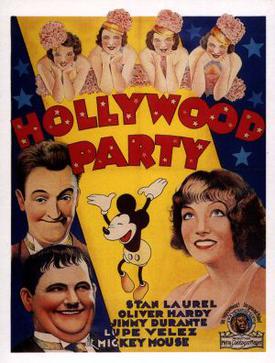
Hollywood Party, also known under its working title of The Hollywood Revue of 1933 and Star Spangled Banquet, is a 1934 American pre-Code musical film starring Laurel and Hardy, The Three Stooges, Jimmy Durante, Lupe Vélez and Mickey Mouse. It was distributed by Metro-Goldwyn-Mayer. Each sequence featured a different star with a separate scriptwriter and director assigned.

Whoopee! is a 1930 American pre-Code comedy musical Western film photographed in two-color Technicolor. It was directed by Thornton Freeland and stars Eddie Cantor, Ethel Shutta and Eleanor Hunt. The film's plot closely follows that of the 1928 stage show produced by Florenz Ziegfeld.
Chasing Rainbows is a 1930 American Pre-Code romantic musical film directed by Charles Reisner, and released by Metro-Goldwyn-Mayer.

Let's Go Native is a 1930 American pre-Code black-and-white musical comedy film, directed by Leo McCarey and released by Paramount Pictures.

Estelita Rodriguez was a Cuban actress best known for her roles in many Westerns with Roy Rogers for Republic Pictures, as well as her role in Howard Hawks' Rio Bravo.
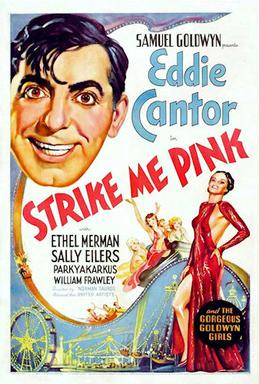
Strike Me Pink is a 1936 American musical comedy film directed by Norman Taurog, starring Eddie Cantor and Ethel Merman, and produced by Samuel Goldwyn.
Hollywood Goes Krazy is a 1932 short animated film featuring the comic strip character Krazy Kat, as well as some caricatures of well-known actors of the time.

Society Secrets is a 1921 American silent satire film, directed by Leo McCarey. It stars Eva Novak, Gertrude Claire, and George Verrell, and was released in February 1921. It marked McCarey's directorial debut. McCarey didn't make a further feature film for eight years as he concentrated on writing and directing shorts.
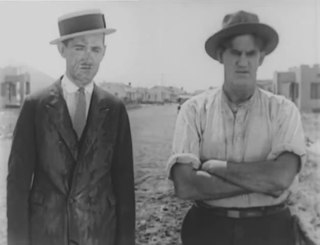
All Wet is a 1924 American film starring Charley Chase and featuring William Gillespie, 'Tonnage' Martin Wolfkeil and Jack Gavin. It also featured an uncredited appearance of the future star Janet Gaynor in one of her very first roles.


















